A conversation with Jamie Berard on 10312 Modular Jazz Club and LEGO’s Modular Building Street
 3
3

With the official unveiling of the 2023 LEGO Modular building 10312 Jazz Club, I had a really special opportunity to participate in a roundtable with Jamie Berard, the “father” of the LEGO Modular Street.
Update: Check out my detailed review of 10312 Jazz Club to see more of the new 2023 LEGO Modular!
From the Cafe Corner, Jamie crafted one of the longest running LEGO products aimed at adults, that’s one of the most beloved by LEGO fans of all ages.
Here’s some snippets from the media roundtable, which I thought was particularly insightful, and I hope gives you a deeper look into Modular design choices, how these sets come together, and the question of diversity and representation with minifigures.
The roundtable also consisted of Brickset, New Elementary, Brick Architect, The TTV Channel, AFDL.it and Bricking Around. Be sure to keep an eye on their sites and channels for when their pieces on the 10312 Jazz Club roundtable get published.
When I was in Denmark, I also had the opportunity to preview 10312 Jazz Club, and interview set designer Anderson Ward Grubb, check it out on my Youtube channel for further insights into the modular!
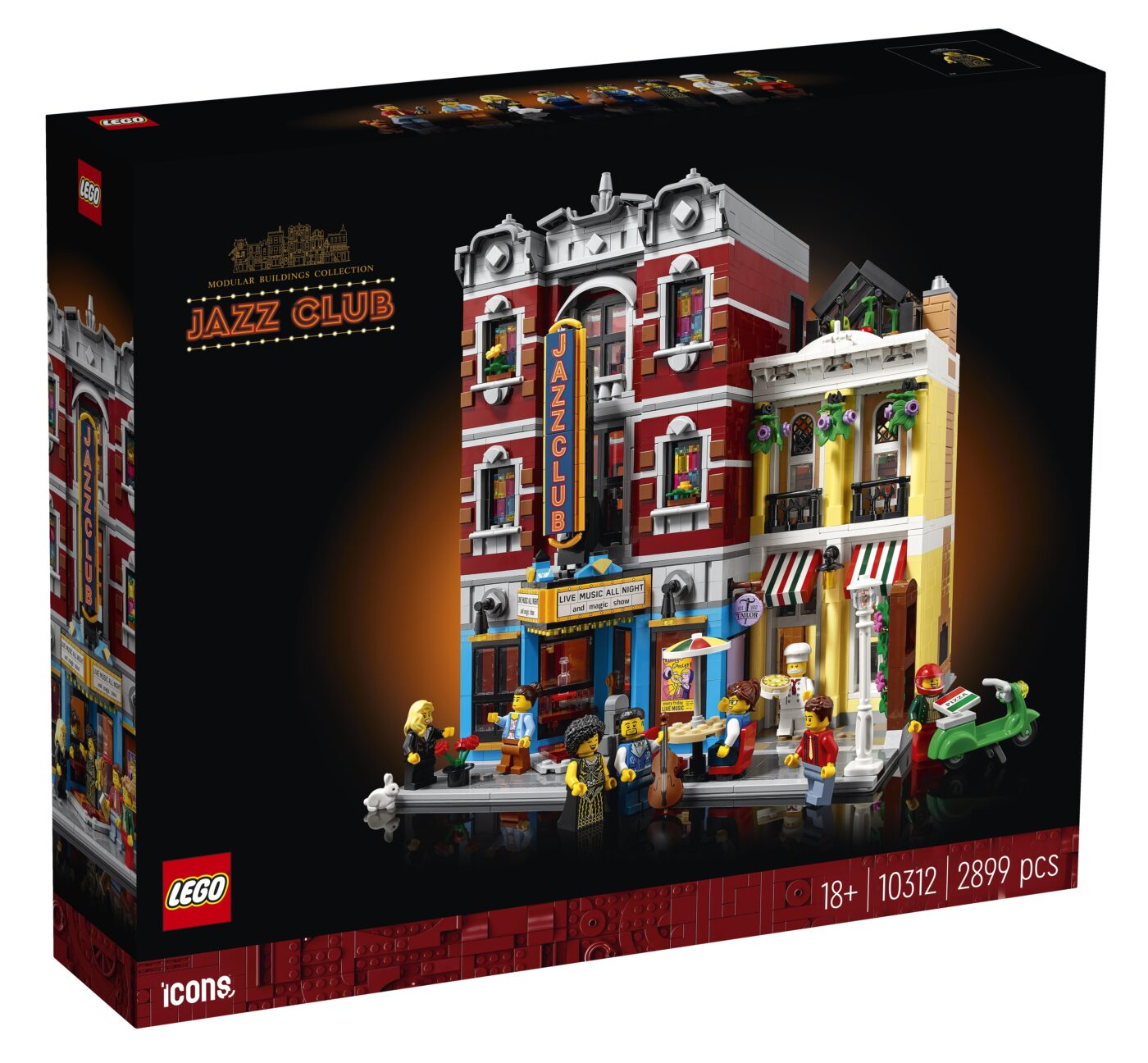
10312 Jazz Club will be released on 1 January 2023, and will be available exclusively from LEGO.com or your local LEGO Store.
Here’s the regional product pages and pricing:
- 10312 Jazz Club [US] – US$229.99
- 10312 Jazz Club [AUS] – AU$349.99
- 10312 Jazz Club [UK] – £199.99
- 10312 Jazz Club [EU] – €229.99
- 10312 Jazz Club [CA] – CAD$299.99
I hope you enjoy this piece.

What areas of the US, if any did the design draw inspiration from?
Jamie: I definitely know that he was influenced by the Chicago and New York area. It’s just any of those urban cities that would actually support nightlife and this whole music scene, which I think he’s referenced.
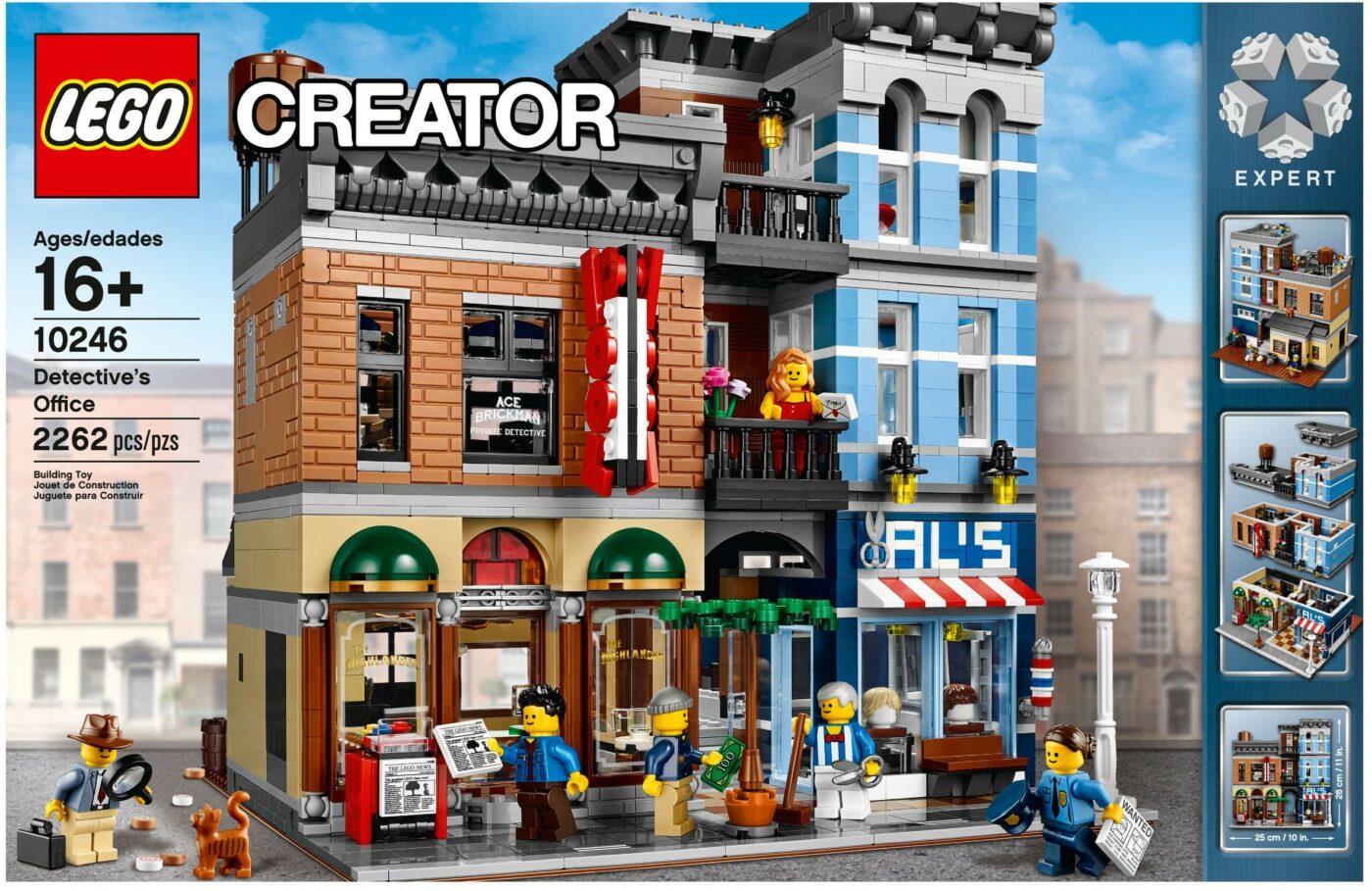
There’s a bit of both an architectural and building arrangement similarity between the Jazz Club and the Detective’s Office from 2015. Was that a conscious choice?
Jamie: I can definitely see that comparison because I think it speaks to some of the storytelling that was happening during the development phase.
I think there’s something about that film noir time period of mystery and the evening stories, and it was a deliberate choice that we were coming off of the hotel where, when you’re at a hotel, you want to have a night out.
We actually don’t have many activities for people to do on the modular street as far as entertainment. You can go to the Cinema and now you can go to the Jazz Club.
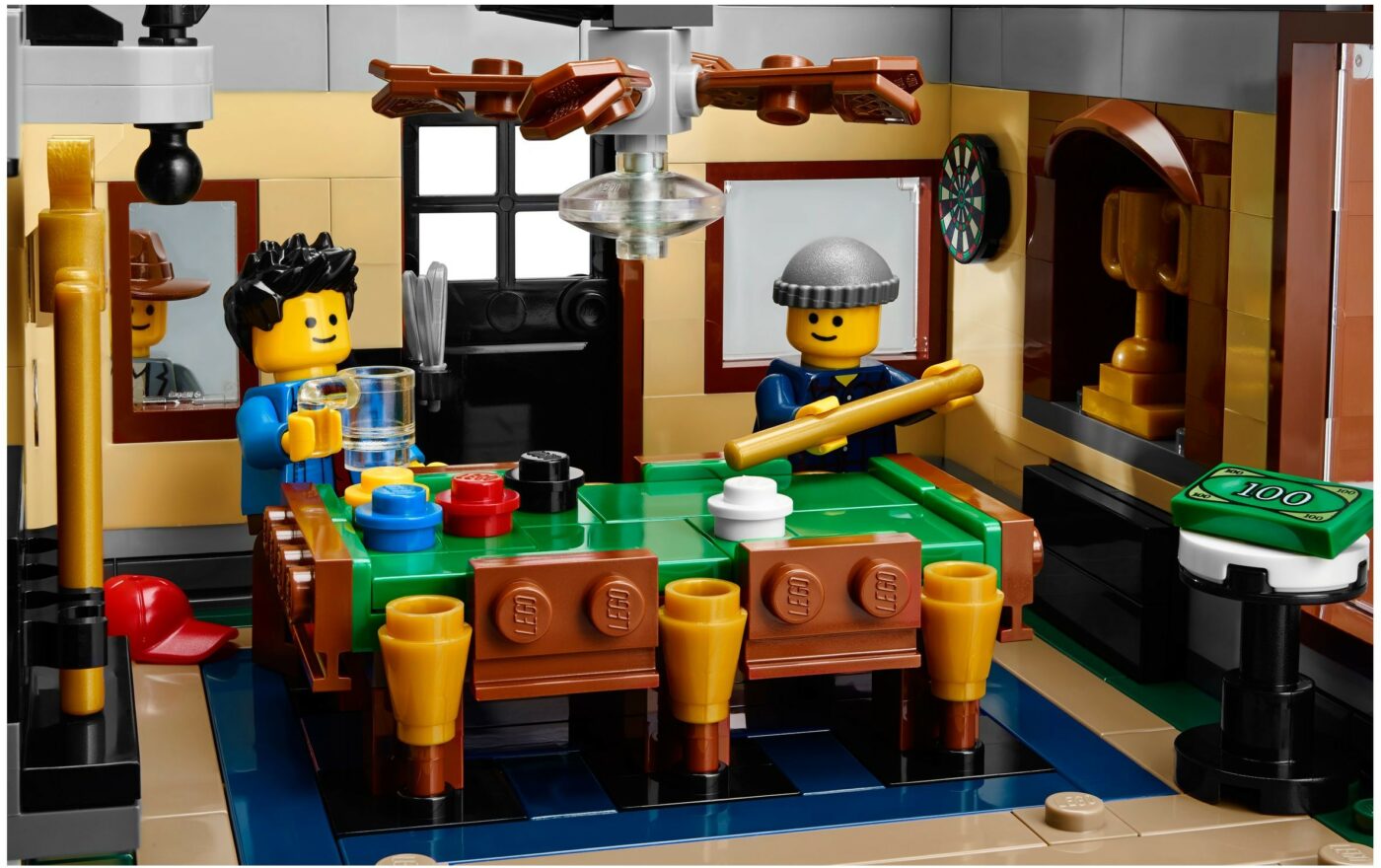
Once you start to think evening stories and then you start to think like the Detective’s Office comes in, this one had a lot of associations with the music scene, like these neat smoky rooms with ambience and a little bit grittier as you’re walking down the street.
I can totally see the set matching with the Detective’s Office where the detective could have easily been walking by trying to find a cookie smuggler, just listening to that beat in his head while he’s trying to solve the case.

For me, I also see a very deliberate link to the Assembly Square, maybe not architecturally, but thematically.
We’ve had a celebration of music in many of our modular buildings and to be able to have the music shop in the Assembly Square and then you got the Jazz poster in the hotel. But goes back to the Detective’s Office, like you said – when the lights go out, what happens in the modular town?

Do the individual minifigures in the sets have internal names that you use when you’re talking about the stories they tell?
Jamie: We had too much fun during the Detective’s Office where we actually gave character names like tje detective was Brickman and then we got feedback from the fan community saying “you don’t need to be that explicit and tell me where to move cookies and give names to the characters”.
We actually had a reasonable amount of feedback that said the whole idea of this street is supposed to be open-ended creativity, where every element can be anything.
Every character can be who they want to be.
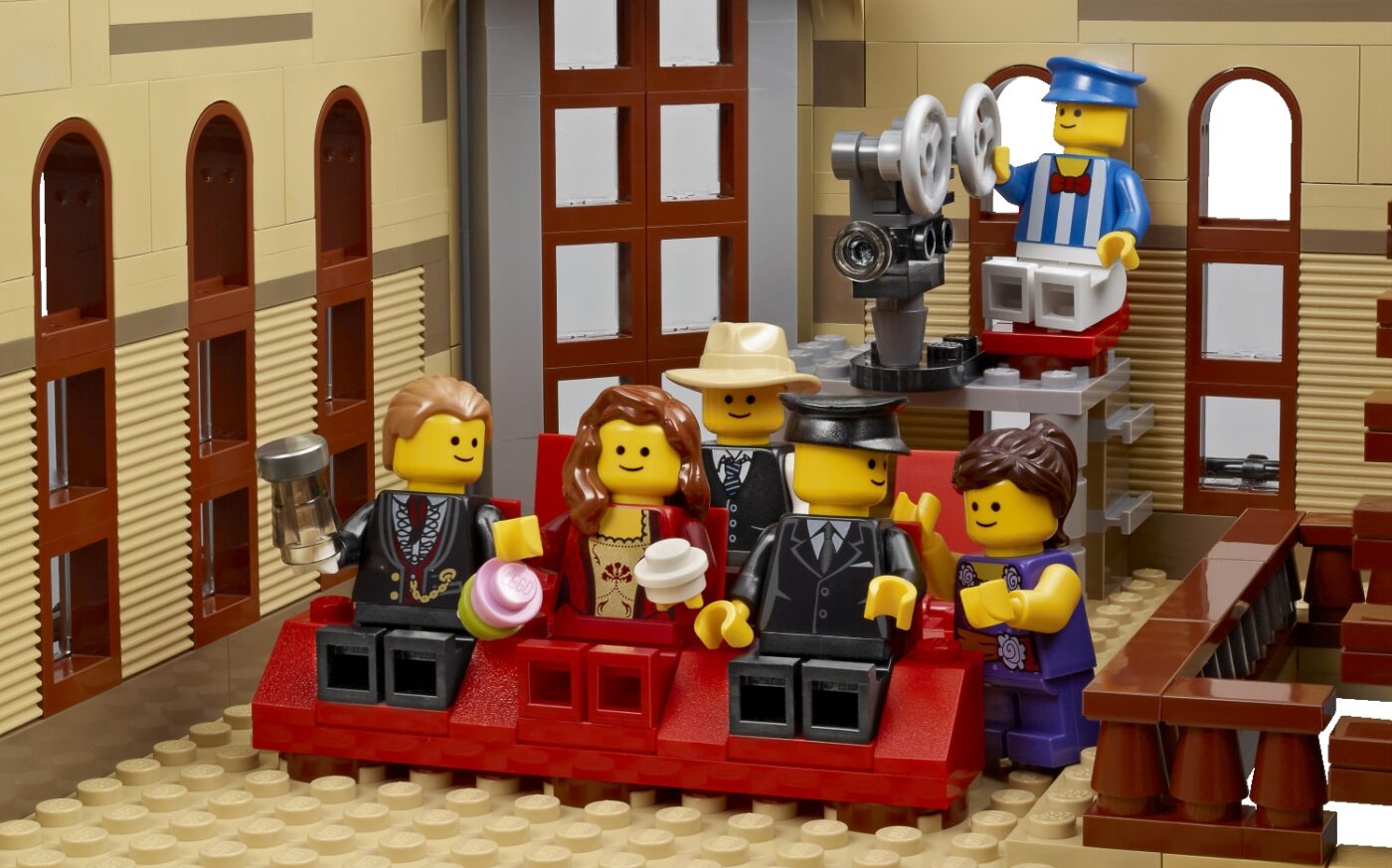
We actually have a fine tradition of many of our characters, especially in the two dots and smiley face era that are very ambiguous.
Is it a man? Is it a woman? Is it this character or that character?
It can really be who you want it to be, and so I’ve grown to appreciate that part of the charm of what we’re doing is not being too prescriptive.
I think you can definitely prompt the areas of interest without beating people over the head and saying, “No, this person is that character”.
I think we’re still evolving the concepts where we are giving more back story, where we’re trying to make the characters have a more integral role in the building rather than just be anonymous mannequins on the side of the street. They are integrated, but we’re just trying to be a little bit less prescriptive.

Jazz is rooted in African American culture, and has a lot of history within the black community. One of the things that I think people with darker skin feel is that they can’t relate with yellow minifigures, so there’s a bit of contention about the minifigures in this set, and why more accurate skin tones were not included.
How do you and your team navigate through issues like this?
Jamie: I fully appreciate and I’m very familiar with that conversation in a modular street context. When the origin is the two dot and the smiley face, the minifigure was a representation of make-it-your-own canvas.
And like I said earlier, we’ve had ambiguity on who the characters are as well as their gender.
We’ve intentionally tried to keep it everyone street. There’s no American street or European – it’s everyone’s street.
Every brick can be used for something else and it’s the versatility of characters, building techniques, everything.
I can appreciate, for some people, they associate certain things when they see it. I don’t. I don’t want to assume that’s for everyone.
Just like when you see a firefighter and the fire brigade, some people see it as a man and other people see it as a woman.
I like the fact that you can make it your own and feel something for it. When it comes to telling stories, what I don’t want to happen is that now I’m prescribing this is a street of a particular origin, that this is America, if it is anything.
I keep it open, but I don’t want to miss all of the variety that life has, and that includes stories of people of colour and I want to capture those.
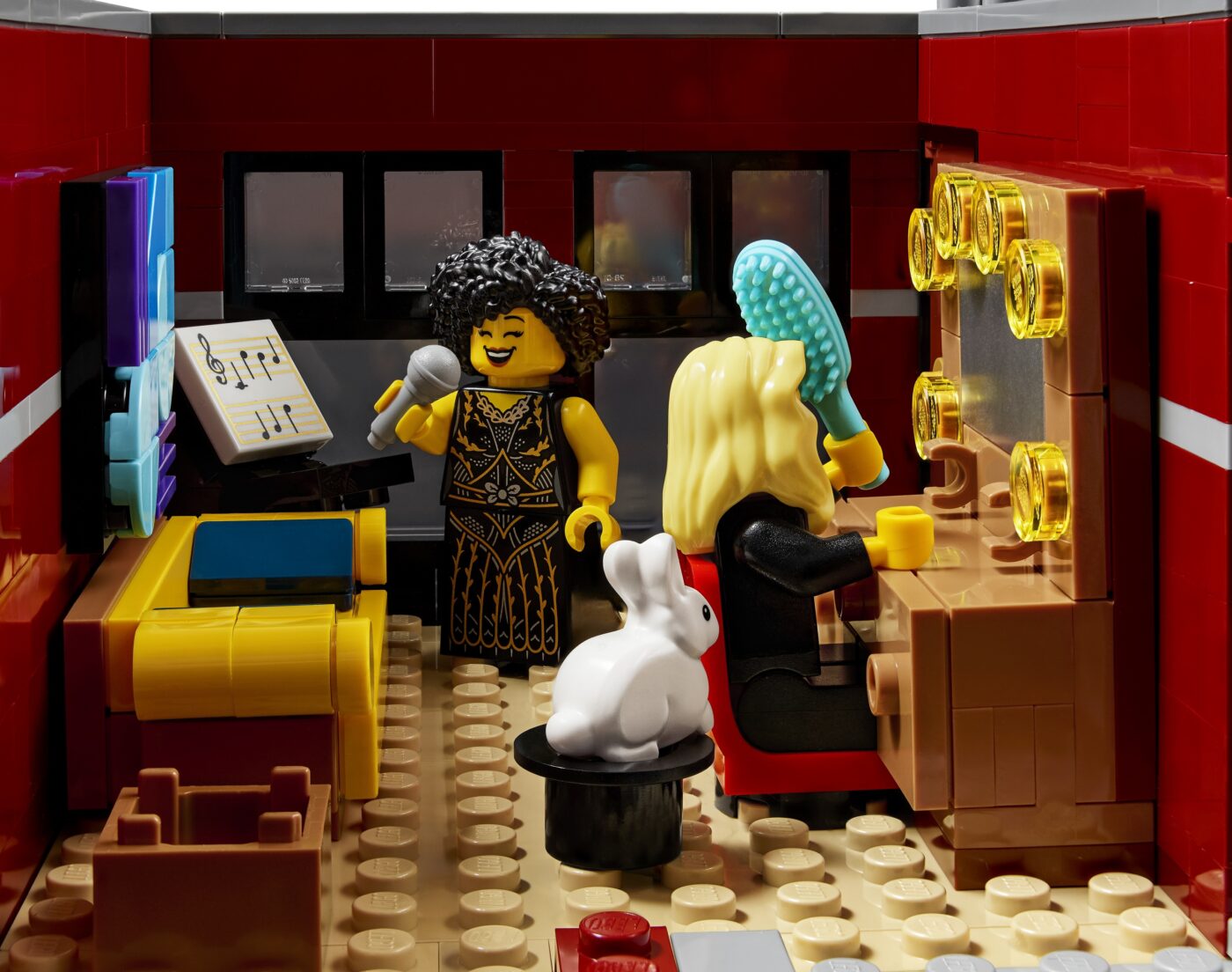
We happen to have the yellow minifigures, what I perceive as the blank canvas, but we’re still trying to give them those wigs that are associated with the black community.
We are trying to introduce some of these cues that would allow people, if they choose to pull them closer one way or another.
But again, we don’t want to be overly prescriptive and tell people this is this character with this name.
We’re really trying to let people decide how they want the story to go and yet we don’t want to exclude stories.
I think for me, the worst thing is because we’ve chosen the canvas of the minifigure to be yellow, therefore, we can never tell stories of people of colour or minority groups or others.
That would be a disservice, I think, to everyone, because everyone should be able to enjoy what the street has to offer and the open ended creativity.
I’m not discounting some people that feel that way, and I’m not saying it’s not valid. I just think that the direction we’ve chosen for the street should allow for people to interpret however they want. But hopefully there’s enough stories on the street that people see their story told through at least one of the buildings at some point.
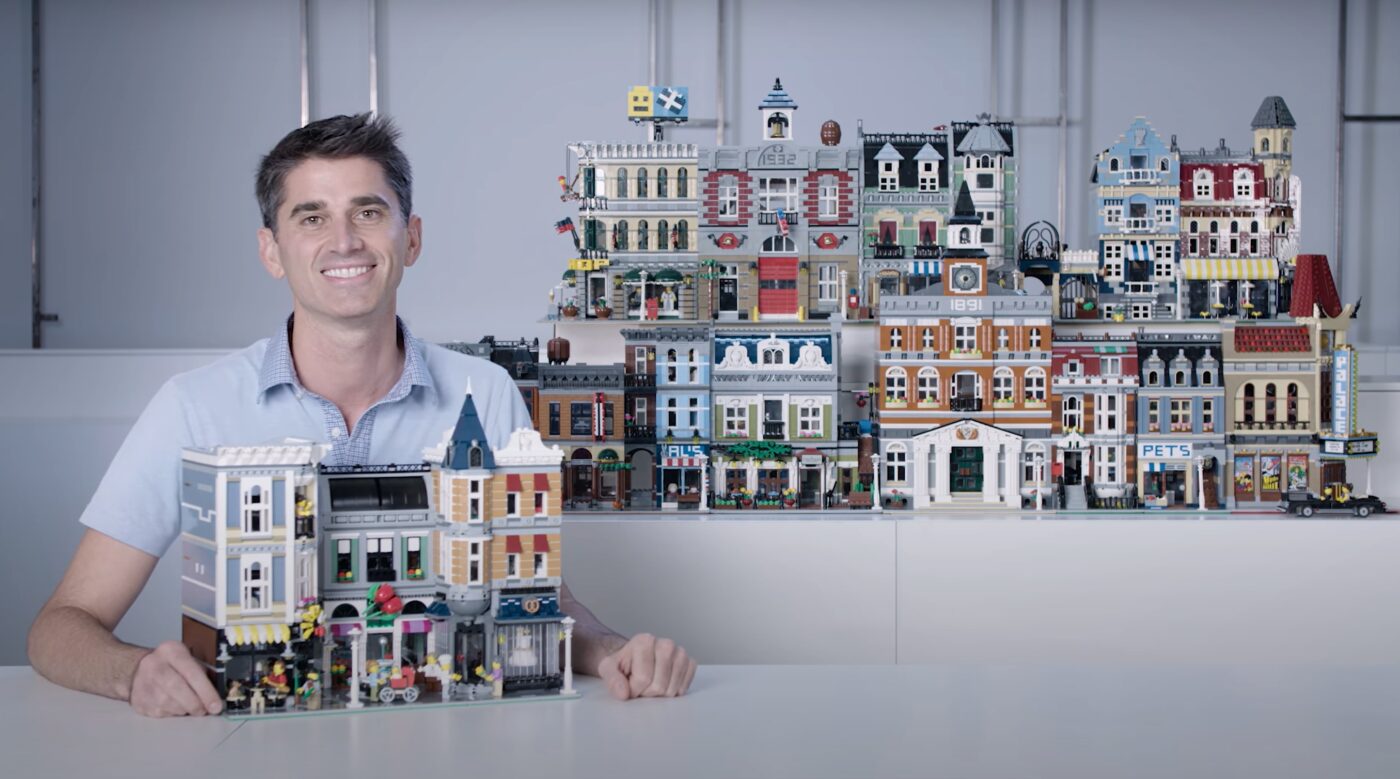
Looking back at your original concepts and ideas for the Modular Building Collection, what has surprised you about how the collection has evolved in the past few years?
Jamie: What I can say probably surprised me the most is just how some of the things that excited people in the very early buildings are still very present today.
The idea that we can still have a concept that goes back, I think 17 years now that we’ve been able to build on and still have depth and still have stories to tell, but also still have all of those links.
It’s like a snapshot of this imaginary world that we’ve somehow created that really feels endless. So I love when we’re going into each new product that it really feels like the universe is so known and appreciated by the fans.
It makes it really fun and easy to tap into previous stories and build in new stories because the foundation of everything is just so open.
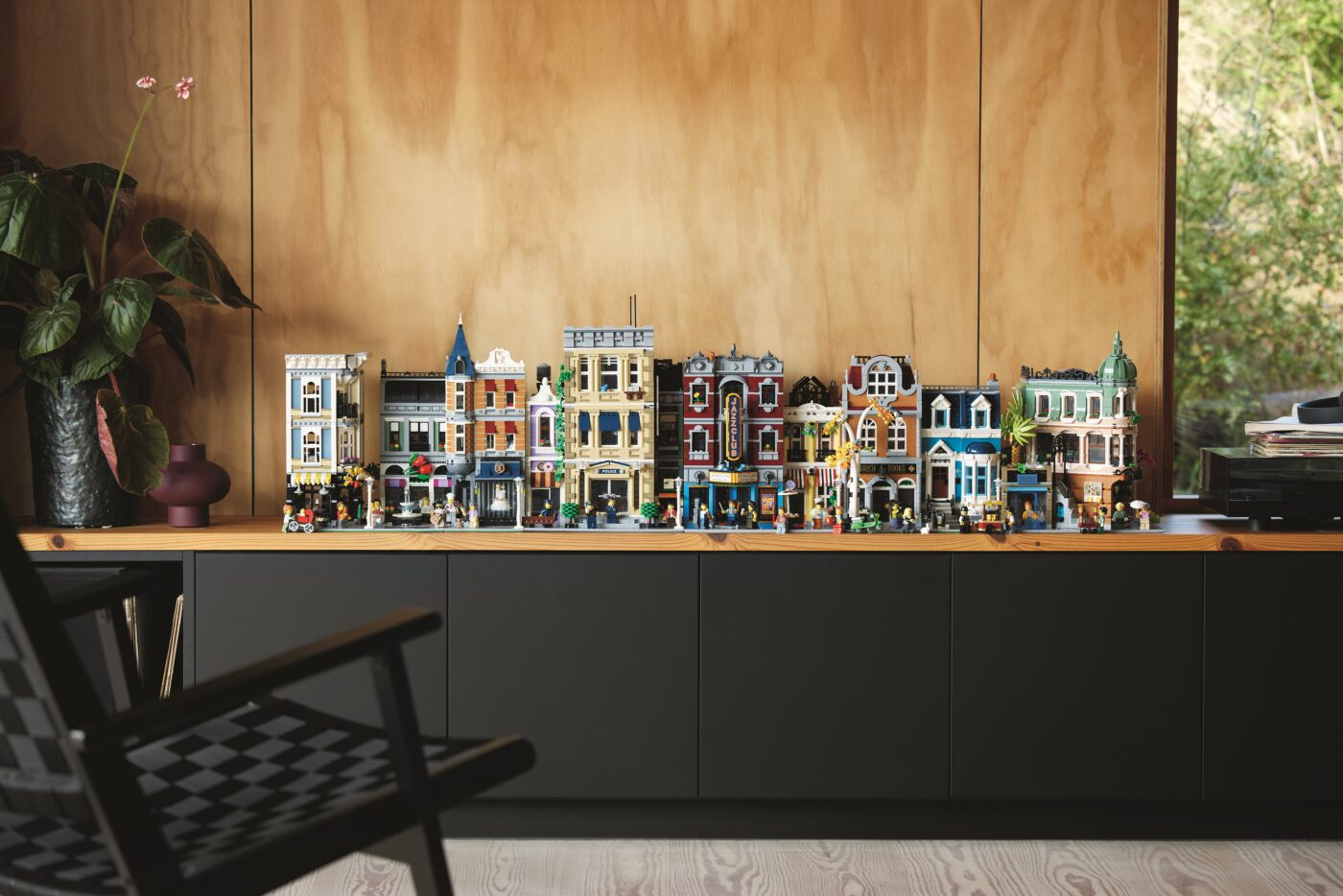
So that’s probably the biggest surprise for me is that we still, after all these years, have so many more stories to tell, so many more styles of architecture, so many more building techniques. It just gives me optimism that we’ve got a long future ahead!
When you first saw the the concept or the final model of the Jazz Club, what blew you away and made you go, “oh, this is it!”
Jamie: Well, full disclosure, I get to see it all along the way.
So unlike you guys that get the finished product, I get to have a lot of those moments along the entire development process. For me, I actually found it really fun when Andy started experimenting with the front, having the the corner door approach with the awning – it started to feel very fresh, but also reminiscent of a fine tradition in the past where we’ve tried to explore doorways and openings and putting things at angles.
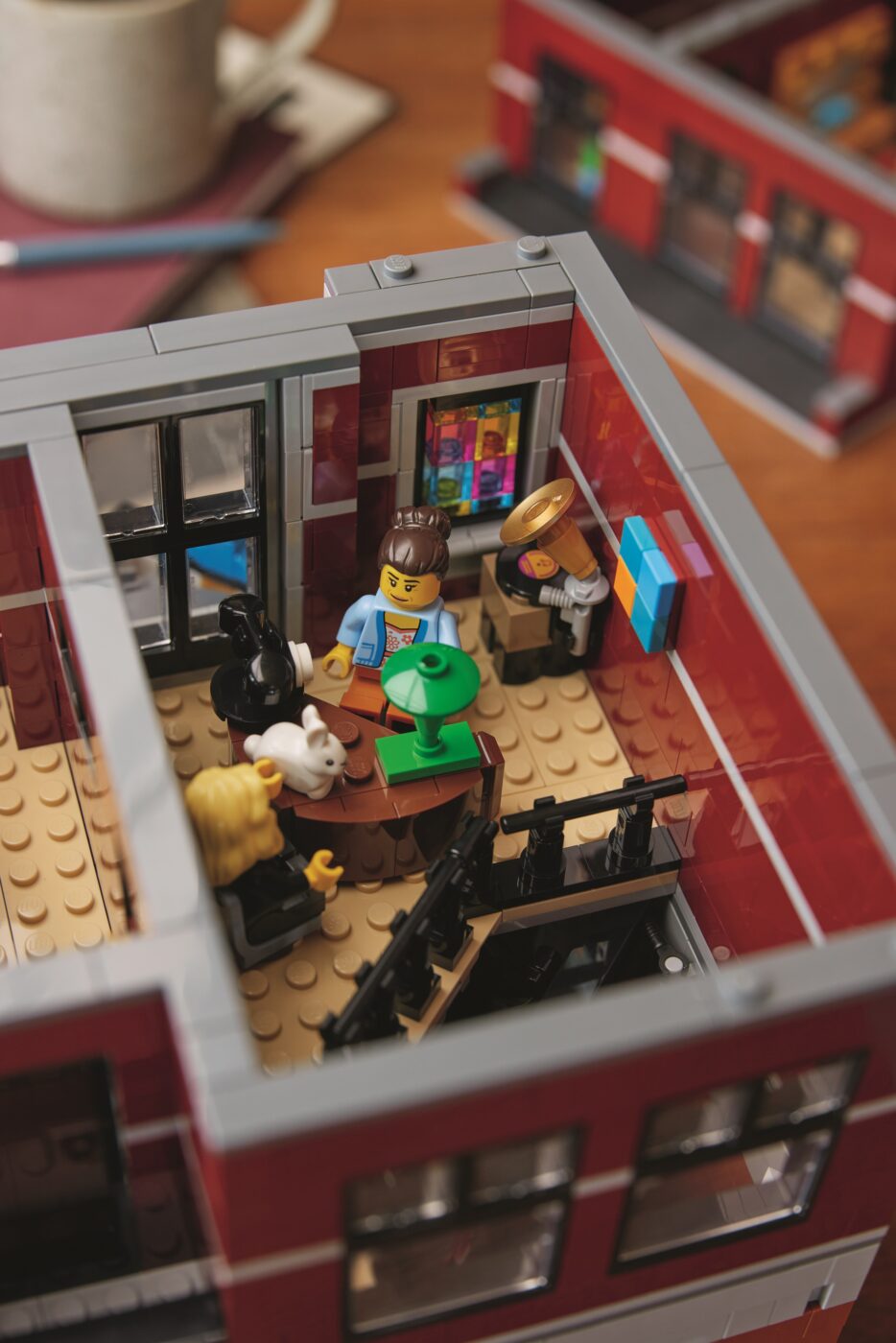
But I’ve also really appreciated that he’s having fun developing the stories and characters. The fact that he actually gives each of the characters a place in the model that you look forward to seeing them in that place.
He’s had a lot of fun bringing in animals. I love it when there’s animals in the model. We got a squirrel and a rabbit coming out of a hat. It’s always nice when I can let somebody’s vision come to life, and yet I feel so connected with it because there’s so many references to things that I love about the modular buildings and that someone else reinterpreted in their own lens.

The umbrella mildly resembles that old umbrella pattern that we used to have with the red and green stripes which was introduced in the old Pizza To-Go set. Did you ever consider bringing back the old umbrella design or is it a deliberate reference to that old design?
It’s definitely a deliberate reference. Andy actually tried to bring back the old one, but it clashed just enough with the new colour scheme because it’s just off with the yellow that we decided to update it instead of trying to recreate it.
When an element isn’t available anymore, it is our chance to make it anew. In this instance, we decided to go with the homage rather than recreation, just to have it blend in a bit better.
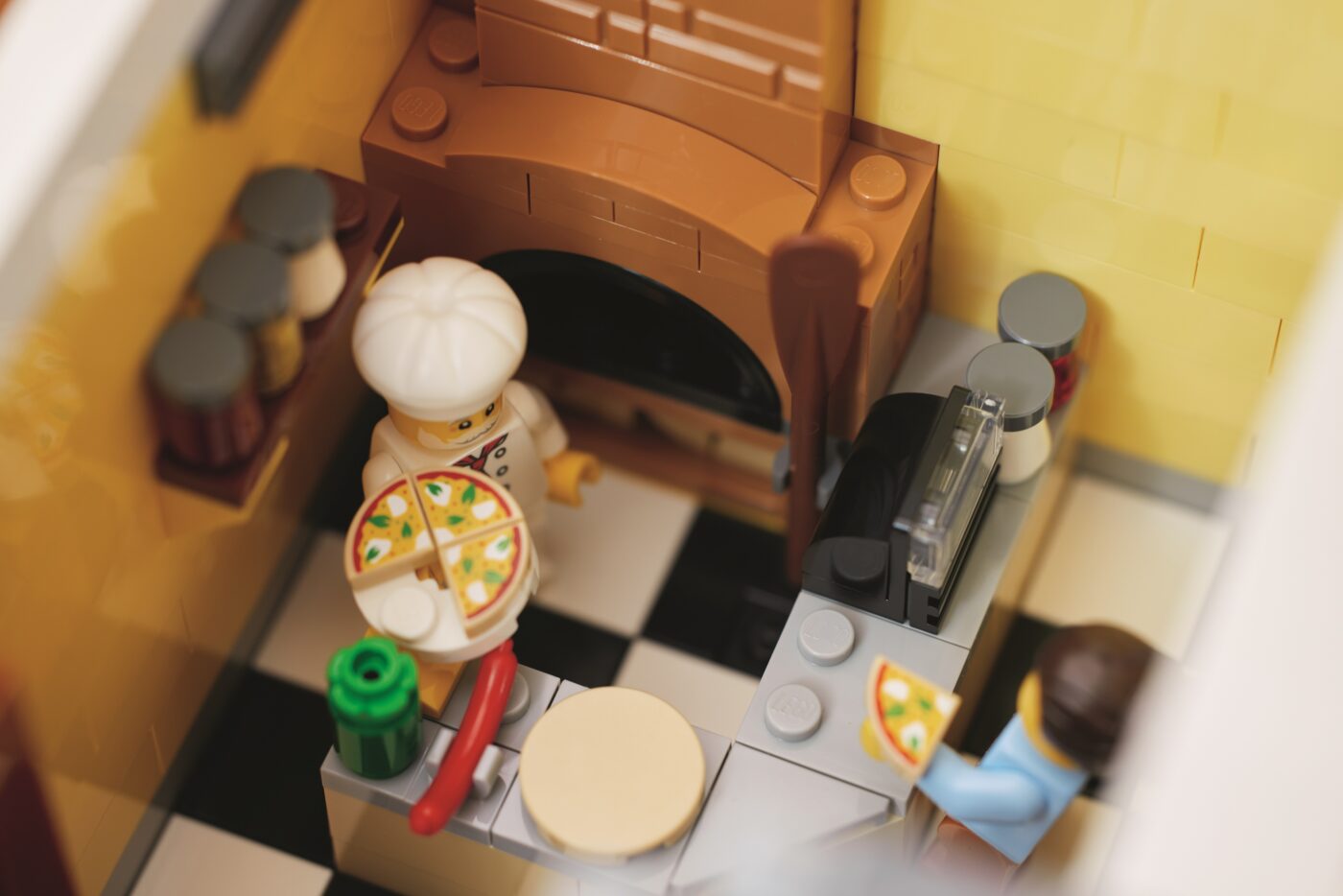
Why Margherita for the new Pizza slices?
Jamie: LEGO designers actually have tried to get into the habit of intentionally letting some decorations exit just to make sure that they don’t get overused.
We have a habit in the design organization to will hold onto things for quite a while just because they’re available, but something like pizza, there’s so many varieties of pizza.
The choice was made that we would exit it, and then it was a choice of who wants to bake the next pizza slice. It was quite a fun journey in a team filled with a mix of vegetarians and meat lovers, so we landed on the delicious basil and mozzarella, but anticipate that hopefully that means in the future, new toppings or flavours might come out.
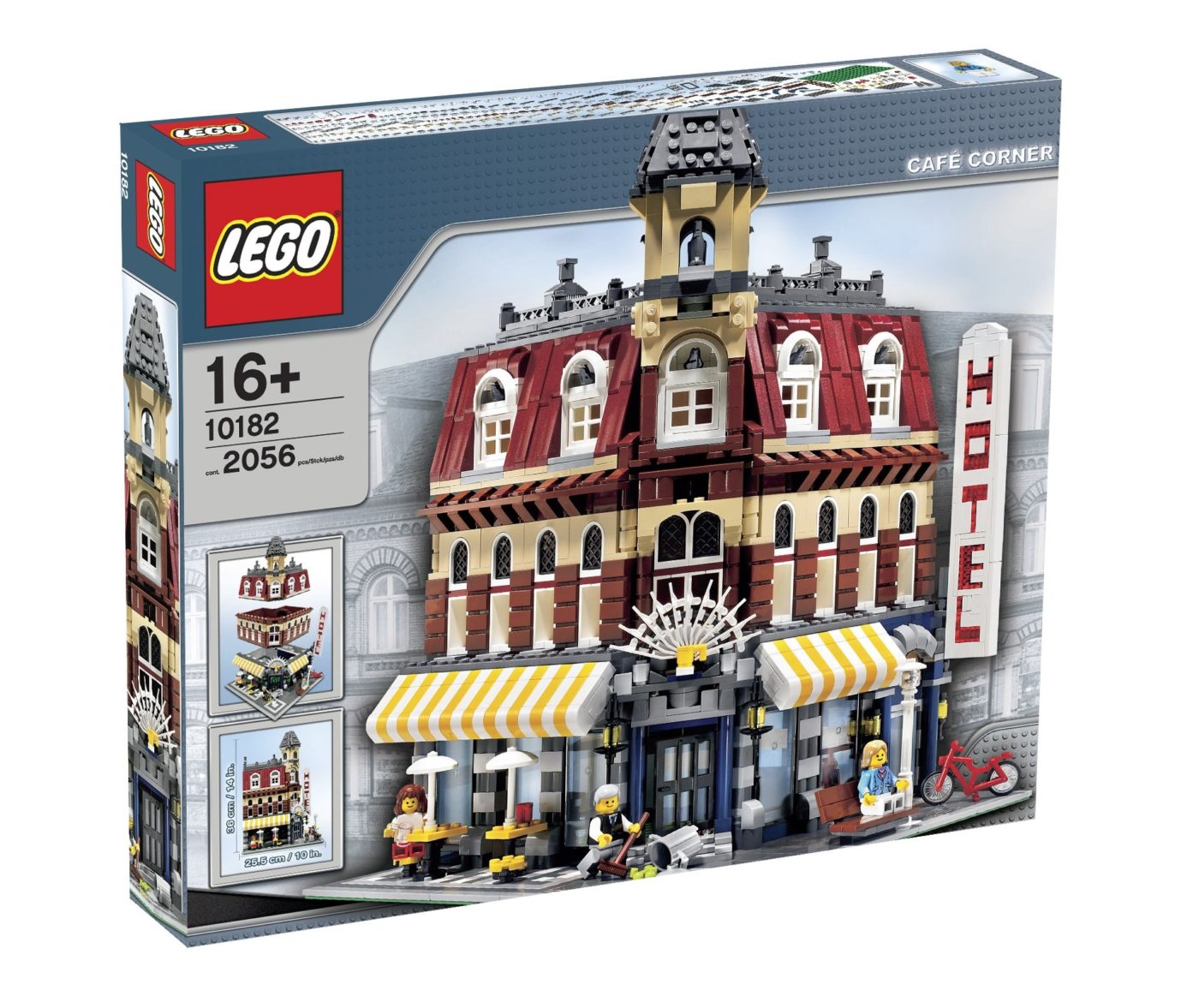
The lineup of sets for adults is so much bigger now then when the Modulars first came out – does that put more or less pressure on the design team?
Jamie: I’m a big fan of competition. I love us to never get complacent. I love the idea that there’s always somebody trying to outdo us.
Honestly, the fan community has been there all along. It’s overwhelming to see the creativity of how fans come up with modular buildings or cars or buildings or architecture, and it’s just like, wow, these guys are really good. How can we possibly impress them? a
For me, it hopefully and I hope that you see this over time, it should elevate all of our products because it’s only good products that survive in this process. In that environment, there really can’t be a bad product because there’s so many more options and the consumer will answer one way or the other.
They’ll buy it or they’ll say, I’ve got other things I can shop for. I don’t need that.
I actually really like the brutality of that in many ways, it’s a very humbling experience, but I think it keeps us real and it really makes us self assess every day – are we actually doing enough? Is this good enough? Are we pushing it enough?
And we get direct feedback. Social media is so immediate and so now you know instantly how people feel and you could be right in the development of something else, and you have to react because you’re like, that didn’t quite go the way we wanted.
As disruptive as it is and uncomfortable as it may be, I love it. It really help us make the best products.
You’ll also find there are some products that maybe you don’t connect with and maybe weren’t our best, but it was an opportunity to try something else where we can experiment more and then learn from them and then hopefully get better and better.
If you only have four products, you’re not going to take too many leaps of faith because they all have to work. If you have a bigger assortment, you’re more likely to try things because you have that opportunity to stand out or just do something different.
10312 Jazz Club will be available on 1 January 2023 for LEGO VIPs, and will be available exclusively from LEGO.com or your local LEGO Store.
If you’re purchasing 10312 Jazz Club, please consider using the affiliate links in the post, as I may receive a small commission from each purchase that goes a long way in supporting the blog.
To get the latest LEGO news and LEGO Reviews straight in your inbox, subscribe via email, or you can also follow on Google News, or socials on Facebook, Instagram (@jayong28), Twitter or subscribe to the Jay’s Brick Blog Youtube channel.







